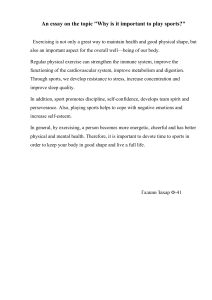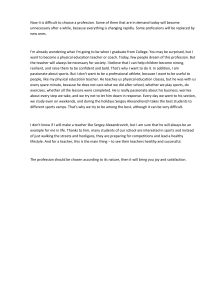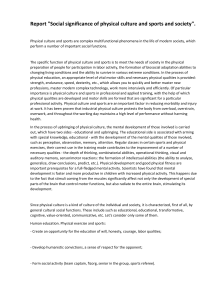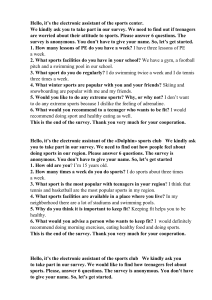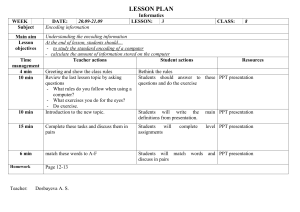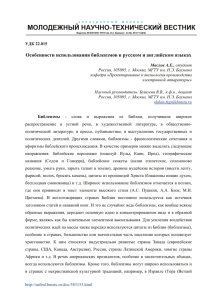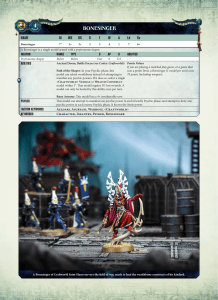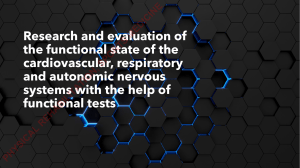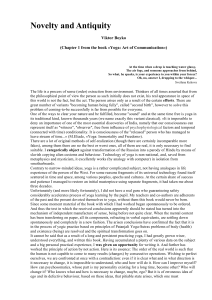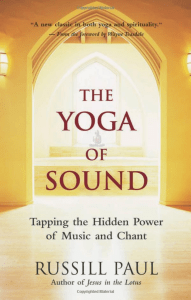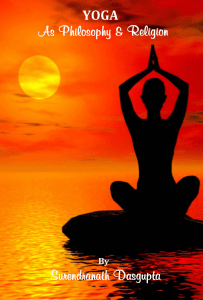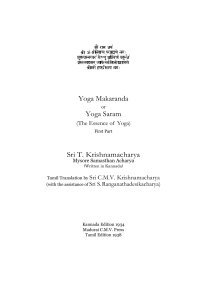Просмотреть или - Научно
реклама
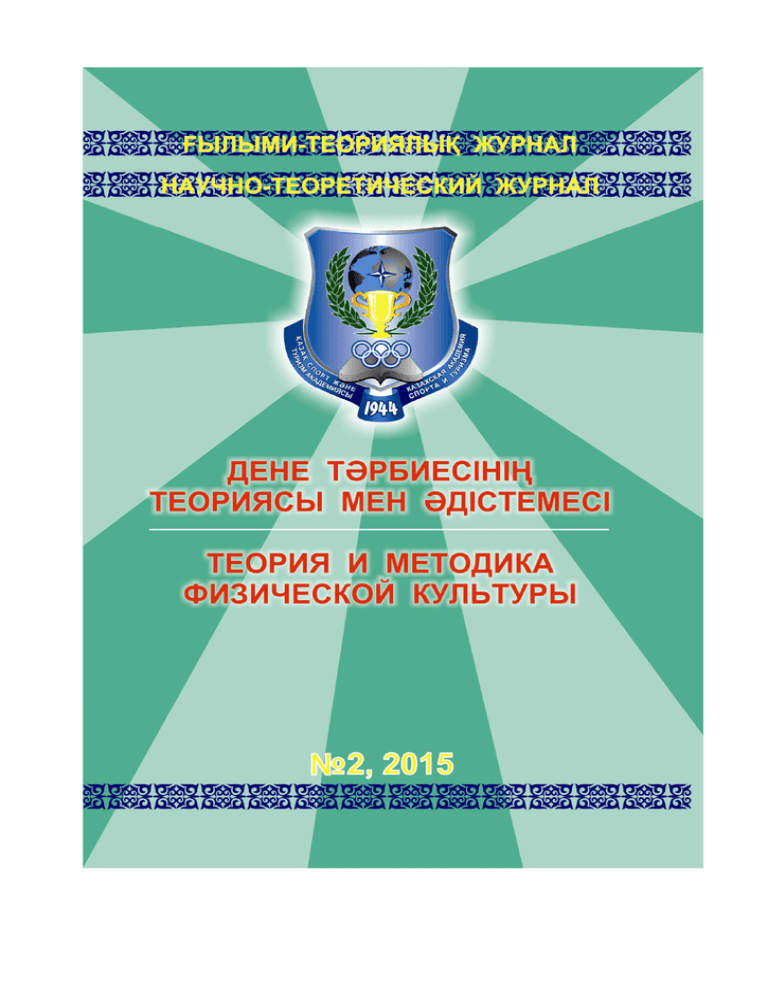
0 1 2 3 796.032:94(38) . . , , . , , . : , , , , , , , , , , . – , . . , , . , 4 . , . ( , « – « ) » « ; »- , , )- : , ( », ( ») – ) ( . « . » [1] » . « , – 2900 2500 . . , . , , , , – . « » [2] , , , , , . – , , . 4 3, : «… , , , , , , . , , , , – , – .). , , , , , , – , : »… ( – .). . . « : « » [4] – , – . , , , , ? ( – .). , , , »?. . « : », [5] 776 « . ., , – . . ( – .) – 9 30 . . (192,27 . .), 724 . . , , . . - 688 . , , . , 644 . , . ». , , . . 5 680 . 33- , ( . 5 1210- . . .), . , 350 . . , ? , 20-22 . , . 18 . . , , [6] … , …». : «… , . , , , « . : , » [7], , , . , , . . . , . . « , , » [8] : « . 50 . , … , , , . , « ». , , , ». , – , XVIII . « , ( , –« )» [9], , ». , « » [10] , :« , , . 6 III , , . 12- . .». , ., . , 13, . , , . , . ? , ? , , « , », , . . , [4] ». » [5] ( ) , – 15 « ? « 11 . , . . 77 : «… VIII . . – .). . . , , , , , – . , , , , . ». , . , , , , , . . [11] : , , – . « , » , , ». : « , , , . , , . 7 …». VII . . . , , , , . XIX . . « : « » [12] , : . , , … , ». « , », - , . . – – , . . . « « » [13], c , » [14], , – « », « ». » [15] « ». , . , – . , « , , ». ( » » XIII , ), . . , « , », . , , – , . , . , , , , , . , 400 , , , , . (95-175 . .), , 8 , « , », [16]. « » [17], « », , . . . 93 « ». , . , , VIII , , , . KZ » [18], Hertfordshire Press 2014 2014 « , , . 21 : «… , …» [19]. , , . . . – » [20] « :« , ». , « : » [21] , « ». , , 12- . , 8 . . . [13], . : « 61 , , . II . « » ( ), …». . . , «… » [22]. , , , . . 85 , [17], , 18 . ., . , . , , , . 21- , – . . » [23], 9 « 2012 , . . , « » « »; « » « »; « –« », , », », » « », », « » « »; « » « »; « » , « – « » , »; . , , . . , , , . « », ., . 70- 8 . 80- , . , « – », , 4. 2. . ., . , , , , . 22 . . « , . » [24], , , : « ( « » – 5- . .) . ». » [25] :« , , ; : , , – ». – « , », , , , « , ». [16]. , , . . . , [26]. 10 , . , , , , , . . ( ( ), ) , . , Alan Outram , , [27]. « » [28] . [29]: « , . , , , . ». , 4- . . . , , . , . : « » [30]. , . , +40 , , -40 , . . , , . , , . , . , , « ». , , , , . 11 - « , » [31] : «… … , …» . , « :« » [32] , , , ». , , , , , . , .). , , ( « . , , » [11] . 24 , : «… . , ) , ( ) . , – . - . , – , , , - , - . , – , . , , , . , , , [33] , : », « , », . [34] , , . . , , , . 12 , , ( ), . « », , 619 . 2. , (II . .) … [35]. : « » [36]. . ». , , , , . . « , , », , , , , [37]. « :« » « » , . . , , , ( ) . « » , , , , » [38]. , V – IV ., . :« – . , » [39]. , , « » , , . 13 . , « ». , . » [40]. . « , , , , « …». , ? : . , , , . , - . , . . . . , , , . . « » [41] «… : , , . …». . : «… , , , , ...» – .). . . : . : «… , ... - , , . , , ». , , . , . 14 , , – ; , : , , – , , ; , , , , ; ( ) – – , , , – , , – , , – – , , . , , . . – .– . . « « », « , », - . », « », « », « » « », », « ». », « . ?» , , . , . … « , . :« » « - . , , . » [42]. - [43] , . . » [44] « , . , . . « , , » [45] . «… ». , , . ! 626 . : 1042 . : « , …». . , , , , . , : « , , , , – , , , , . – , .), [46]. 15 . , . (« . 110 [40] ») , «… …» , . , . :« , , , , , , , , , . , , . . IX . [47], , , . ». « », :« …». , , , , . , :« …» : – , , [48]. , . , , , . « » - « », . . : », « : , , , » ; , « , « « » « », ». , , , . : . « , ; « , » - » - « »- , , – , « ». , – . , , , – , , », « . , , . , , , – XIV « », – ». « , , . . , – « ». , . , , 16 », « , . « : » « » « « », , », . « »- « », – , « , ». « ». , . , , , : « – », « « », », »; « » « ». « ( »- , ), ». . « « ». », « » : » - « « « ». . », », , « » « ». . , . Patrias ( ), - patricius ( «Patrias» , , « ). , , », , , ». – « Romani). , ,« , – cavalier « ». : « « . » - » « « » (equites » , ». », « »« , « » - ». » , « ». , . , :« - « , » « , . », « , ». , , . , 17 » . » ). , « ( » , [21] – , - «… , , , , , ». , [49] , , , « « « » », « », .« « »« », « », . « », « », , . « » « ». , – , « , « », « » » - ». « » « » ». » « » , « » – », , , . , , , , , , . « . ». [13], [52] . , . [50], . . « , [51], . » , . : 1. . (‘ ’) - , . . 2. . (‘ , ’) - ( 3. , 4. 5. . ). (‘ ’) - , . . . . (‘ (‘ ’) ’) - . . , , - » « », - - . : . « « « 18 » »« , » , ». « »- 1- . [ ] [ , « »[ ], ]. : « , « ». . . » , , , , , . « , , , » : , , », « « « ». , )- . « » ». » « , , , . . . , «… , , , …», , , . , , . « », « Olimpija, Olimpij, [50] «Olim» – Olimbij. Olimpij: « », « , », «Olimpij» , ». , , «pij» , . « ». , – . , , . , ( ) , , . , , , , , , – ( , ) , . , , . , , [4]. . . 197 , , . « , . , , 19 , . . , , , , , ». , , - , , . , , . . , , , . , , [5], . . , . « [53]. :« » – 3000 . .– . (2778—2723 . .) . . , , , . …» – . [51] , », « « .). . 166 » « – , , », . - , , 1913 . 550 , , . , . ., , , ( ). , – , « . . , , » . ». « , . , . : « ». , , . 20 , , , , , : « – . – . – ». . , , , , », , . : . , ). : « « ». », , , , ( , . – ( , , , ), ); . . « » , . , , , , . , « « , – – », ». , , , . , . » [54] , , . . , – .) , » , , , , « ». , . , : , . – IV [55] – .), , , , – – , . , , – [56], , « . 21 » , « , . , , , ...» ( , – .). , . , , , . . , , . , , ., , , . , . ? , 29 , 28 , . , , , 0 28, , 29 , , . . . , . 13 13 , , 30, 31 , 28 29 . , , . . , , 2015 . . , – – 28 2014 . . , , . 28! – , . , , , . « » [57]. , , , . 22 I, , – , . , . , . , « » [58 ] II . ., :« , : , … , , , …». , :« . ». , . , , , , . . , [59] : KZ – KZ – , KZ – . – . KZ – , KZ – , . KZ – , KZ – , : . 1 2 3 4 .: . 5 6 7 : .- ., , 2012. . . . , 2010. . . ., . ., , 1991. . . . .: (I, 57, 58). , 2002. « », , 1972. . – . , . ( ). . 1998. – . 128. , 1769. . .- 11 .- ., 1982. . - ., 1895. . . . 8 9 10 . . ., 1977. . . « 23 », , 2015. - 12 . . « », , 1871. 13 , 2012. 14 15 16 . . . – II, .52. . ., . ., 1986. . . . .: , 2008. . : . , 17 18 , 2005. .- . .: « KZ », , 2013. . . . - ., 1950. - .386. ., 2003. . . . », 2008. . 19 20 21 : . . .: , 2010. 22 », 23 . ., 1941, . IX. . . « »« . .– : , 2012. 24 « 25 26 . . », . , . , 2006. . . 1954. ., . . , , 1958 - 1. 27 Adam Outram. University of Exeter, National Geographic Magazine. October 2009. 28 . . , 2010, c. 496. 29 . // , 1966. – 3. – . 60–81. 30 . // : , .: - 2. - .66. 31 . . , , 2007. 32 . . : . ., 1993. 33 . ,, , 1937. - .3. 34 . , , 1934. 35 . , , , 1998. 36 . . ., 1993. 37 . , , 2002. 38 . , ., 1982. - .329. 39 . , , 1, 1997, .76-78 40 . . .: « », 2011. 41 . : . ., 1991. 42 . VI-IX . , ., 1965. 43 Annales Bertiniani. 830—882; Mon. Germ. Hist.: Script. 44 . . .: , 2010. - . 1. 24 45 . ., 1961. . . 46 47 , . . // , 2000. - . 48 . 1988. - 10. - .15. .224. . . , 1993. 49 50 . . :« . 51 : 52 . « , , 1974. . », 2012. - . 265. – », 2001. : . », 2014. . 53 54 , , . - : . . . . « », 2004. 55 56 . IV. . , 2003. . 57 58 59 .5-6 // . .- : : , .: « », 2012. .- .,1994. 1 (68), : . , 2013. . . , . : , , , , , , , , , , . Summary Kairat Zakiryanov Ancient Turan and Olympic Games of Ancient Greece In this article on the basis of the scientific facts is proved that the Turkic nomadic people of the Eurasian continent had the direct relation to the civilization of many educated European countries, also to the birth of Olympic Games in Ancient Greece. Keywords: ancient Olympic Games, Olymp, nomadic tribes, Sumerians, Dorians, Sythians, Sparta, autochthonous people, autochthonous people , inflected and agglutinative languages , the invention of iron , horse domestication . 25 , 378:796/799 . . . . , ; , ; . . . , , . . . . : , , , . . , [1, 2, 3, 4, 5]. , , , , , « . » « , , , » , , , [6, 7]. [8, 9, 10, 11]. , 26 - . : . : . : . : , , , . . , , . . 3 0, 36, 5 2 , . . . 53,6% 52,6% ( 45,3% ( . ) ) ) 46,8% ( - . 1-2 . , . , . . ( - 10,8%), - 4,2%) ) ( - 11,6%, - 3,1%, ( . , . (1 27 ). . , , ( 10 ) 11 34 36 56 53 ( ) 35 34 49 54 12 16 22 28 36 28 44 42 55,4 58,8 41 37 3,64,2 1 ) 28 . , , . , . , , . , , , . , , . . . , , . ( , ) . ( ) , , . 1 . . .– 2 . 3 ... . .– . : . . ., 1990. . – 4 , 1986. . ,1994. . . : ( 5 ): . : . ... . . .– . ... , 1994. . . ... . . 6 . ... . . .– , 1994. : .- , 1996. 29 7 . . : 8 . ... . .- , 1997. . : . (1920-1991 .): 10 . . ( 11 . . : . ... . ... . .- ,1997. 9 . . . ... . .– , 1997. ): . . ... .– , . . . , .– , , 1999. , 1999. , . . , . , . . . . : , , , Summary S. Zh. Bugibaeva, R.B. Lesbekova, K.T. Tanayev, S.Nurgabylov, R. Manasbayev Training of future teachers of physical culture for pedagogical activity takes place unevenly. The training of the future physical culture teachers to the pedagogical activity goes inequality. It depends on the quality of training. Keywords: physical culture, professional activity, skill, to be trained 30 796.015.15 - 056.26 . . , ; . . , . . . . . : , , , , . . [1, 2]. , , ( ). ( « ». , , , ( ., ., 2013). , . , [3, 4]. . (2003), , , ). . (2013), (2012); . 31 . . . (2011), (2007 – 2010), . (2009), (2010 – 2011). , , . – . , . . : 1. . 2. . 3. . 4. . : , , , ( , ), , . . , , , , , , ( , ) [5]. , , , , , , . , . , , . , 9 , 4 – 5 2,2% – , 45 , 19 , . , ; 11,1 % – ; 2,2 % – : 42,2% ; 6,7% – ; 2,2% – 51,1 % , 35,6 % – . ; 34,4% – ; 2,2% – . 32 ; 11,1% – ; : 75,6 % , ; 48,9 % – ; 15,6 % , , , . – , . : ; ; ; , ; , ; ; ( , , ( .); ; . ) , , . , , , [6]. . , . . , c . , . , . , , . , . . 30 33 , , . , , . , » « ». , , . « : 1988 » , . , . , . , ( 1). 100% 90% 80% 70% 60% 50% 40% 30% 20% 10% 0% - 1( , n = 45),% (6,7 %) , , , 34 ; 17,8 % , ; 23,8 % ; 51,7 % . , , , . « », , , . , . . - , , ; , : , , , , . – , 37,8 % 62,2 % , . , : , ( , , . 2). , , , (76,5%) (29,4%). , , , , (57,1%), (75% ). , , . « ». 35 , – » , « – , 28,6% 29,4% 28,9% 60,7% 76,5% 66,7% 75,0% 58,8% 68,9% 10,7% 5,9% 8,9% 29,4% , 57,1% 46,7% 0% 10% 20% 30% 40% 50% 60% 70% 80% 90%100% – ; – ; – ( ) 2- , ( , n = 45),% , . ( 4 (6,7%) 5 (6,7%) 3). 7 (4,4%) 1 (40,0%) 3 (26,7%) 2 (15,5%) 123- , 456- ; ; ; ; ; 3( , n=45), % 36 , . , , . : , , . : – . , . , , . , (55,5 %) ; 15,6 % ; 11,1 % , ; 4,5 % , ; 2,2 ; 11,1 % % . , . , , , . 4). , , , . – , . , , , , , , . , 37 5 (2,2%) 6 (2,2%) 4 (2,2%) 3 (22,2%) 1 (62,3%) 2 (8,9%) 1– 2– 3– 4– 5– 6– ; , ; , ; , ; ; 4( , n=45), % , , , , . , . : 1. « » , , : ; , , , ( , , , .). 2. , , , ; . 3. , « » 38 – » « – . , . 1 . . / . . : , VI , ., . , . // . , , / , 2009. – . – . 171-174. .– , 2 . . 5: . : . 3 . ... . . : 13.00.04 / . , . ; . . . .– - , 2011. – 24 . . . . . 06. – . 70. 4 // : . , / . . , . – 2012. – , . , / . . II : 2011 .) / , .– , 2011. – . 182-185. 5 Baran F. The effects of a Special Olympics Unified Sports Soccer training program on anthropometry, physical fitness and skilled performance in Special Olympics soccer athletes and non-disabled partners / F. Baran, A. Aktop, D. Özer, S. Nalbant, E. A lam , S. Barak, Y. Hutzler // Research in developmental disabilities Journal. – Vol. 34, Issue 1. – 2013. – P. 695–709. 6 Özer D. Effects of a Special Olympics Unified Sports soccer program on psycho-social attributes of youth with and without intellectual disability / D. Özer, F. Baran, A. Aktop, S. Nalbant, E. A lam , Y. Hutzler // Research in developmental disabilities Journal. – Vol. 33, Issue 1. – 2012. – P. 229–239. . . // - ( , , 7-8 . . . . . . : , , 39 , , - Summary I. Kohut, M. Iarmolenko Educational and training activities as a factor of socialization Special Olympics footballers The purpose of the study - the definition relevance of training sessions for footballers with disabilities mental development. Methods: analysis and synthesis of scientific and methodical literature and materials of the Internet, the survey (interview, questionnaires), comparison, observation, analysis and synthesis. The author was conclude in his investigations that football training sessions significantly contribute to the social integration of people with disabilities mental development. 618.19-089.87 1 . . . . , , 2 1 . , 2 , : . 30 . , , , , . : , , , . . [1, 2, 3] , . [1, 2, 3] , , , , , . , , , . 30 . , 40 59,28±0,79 . , (3 ) (9 ) . . , , , . , : ; ; ; ; , , , , . : 1. , . 2. , . 3. , . 4. , . 5. ( , ). 6. ; , . 7. ( ( ), ), 41 ( , , ( ); , , ), ( , .). 8. , , ( , ), . 9. . 10. . 11. , . 12. III IV , 15-20 . 13. : , , , , , , . , , [4]. , , . 1 The effect of yoga on women with secondary arm lymphoedema from breast cancer treatment / A. Loudon, T. Barnett, N. Piller [et al.] // BMC Complement Altern Med. – 2012. – Vol. 12 (4). – . 66–70. 2 Thomas R., Shaw R.M. Yoga for women living with breast cancer–related arm morbidity: findings from an exploratory study // Int J Yoga Therap. – 2011. – Vol. 25 (8). – . 39–48. 3 Yoga for breast cancer patients and survivors: a systematic review and meta–analysis / H. Cramer, S. Lange, P. Klose [et al.] // BMC Cancer. – 2012. – Vol. 12 (1). – . 412–420. 4 . . .– : , 2001. – 528 . 42 . . , . . . : . 30 . , , , , . : , , , Summary T. Odinets, Y. Briskin Methodical features of yoga therapy in women with postmastectomy syndrome Objective: to develop the methodical features of yoga therapy in women with postmastectomy syndrome. The study involved 30 women with postmastectomy syndrome at the clinical stage of rehabilitation. The developed program of yoga therapy for women with postmastectomy syndrome differentiated depending on the stage of rehabilitation, physical condition of the patient, duration of employment, exercise intensity, number of repetitions of exercises, and the percentage of the means employed. Keywords: postmastectomy syndrome, yoga, rehabilitation, women. 796.422.14 . . . . , . . , ; , ; , . ( ) . , .9 3 . , ( 20 20 30 ) , . ( 1-3%) . 43 ( 10,7%, 3,7%, – 8,7%), 4,7%). : – ( – , , . . . . , . ( ), [1, 2]. , 6400 . , . , , . , , [2], . , [1, 3]. , - [1, 3]. ( [4] ). , , , [7, 8], [5, 6]. , , . (HYP), . , . 44 . . , , 1 . 3 : , 3 ); ( , ( ( ) ( ) 1). . 2014 30 ». . . 1- ( ( ) 3 3 3 19,2 (± 1,6) 173 (± 3) 62,5 (± 3,9) 136 (± 5) 20,1 (± 1,4) 175 (± 5) 64,0 (± 3,3) 139 (± 6) 19,9 (± 0,9) 173 (± 4) 61,1 (± 2,3) 135 (± 7) 4,98 (± 0,22) 5,11 (± 0,3) 4,87 (± 0,41) 0,4 (± 0,3) 0,7 (± 0,2) 0,6 (± 0,3) ) ( ) ( , ) ,% , . , . , . . 420 ± 26 . 30 . . 30 . , . . , ( 17 18 ) 15 . 45 , 16 , . , ). 5 4 , 5 4 . . . XYPOXICO, 21% 9%, 100 6400 . , », (5 (5 ) – ) – 60 6400 . – ». , « » . , , HYPOXICO. [6, 9], ( ), , . (HYP), . . HYP, . . « "OLYMPUS AU 400" 500". . » "BeckmanCoulter LH . , 10 12 - 15 , 16 , 17 18 5 («steadystate»). ( PolarRS800), «Lactatescout») ( ( «Fitmatepro»). 46 . , , 1 2 . . . 10 , 30 11:30 ± 1:20 ( : . 3,7 %, 100%. 10,7%, . ). 2,6%, : 8,6%, 110%. ( 40% ( 2 0,9% 2). 1,1%), - , , ,% 136 ± 5 141± 4 4,98 ± 0,22 5,11 ± 0,19 0,4 ± 0,3 139 ± 6 154± 4 5,11 ± 0,3 5,55 ± 0, 21 0,7 ± 0,2 135 ± 7 134 ± 5 4,87 ± 0,41 4,82 ± 0,3 0,6 ± 0,3 0,8 ± 0,2 1,5 ± 0,4 1,0 ± 0,4 . (1-3%) . ( 3). 4,3% ( 3 %). 8,7%. ( 4). . 30- . , , . , 47 [1, 6] . , , , . 3 - , , , . (Vo2 -1 , – , , , La- ) . , 15 - 16 Vo2, · -1 , / - La, - - 18 - - - - - 17 - - - - - 48,0± 5,5 46,1± 6,6 46,9 ± 52,2± 4,2 5,9 44,0 ± 51,4± 5,2 4,4 51,6± 5,0 50,1± 3,9 54,8± 4,8 53,9± 3,8 54,4 ± 58,9± 4,4 4,0 52,0 ± 57,8 ± 3,2 2,2 57,0± 3,3 55,3± 3,0 49,6± 5,2 49,0± 4,4 53,5± 4.9 54,0± 4,6 57,9± 3,9 56,9 ± 60,1± 2,6 4,5 59,2± 3,3 153 ± 8 155 ± 4 150 ± 9 151 ± 6 157 ± 6 160 ± 5 154 ± 4 157 ± 6 169± 6 170 ± 8 166 ± 179 ± 7 7 166 ± 183 ± 5 10 177 ± 5 179 ± 8 158 ± 6 157 ± 6 164 ± 5 165 ± 7 172 ± 8 172 ± 6 181 ± 7 2,4± 0,6 1,9± 0,3 2,0± 0,3 1,8± 0,4 3,4 ± 0,5 3,0 ± 1,2 3,2± 0,7 2,6± 1,3 4,4± 1,0 3,8± 1,4 4,0± 7,5 ± 0,9 1,5 3,0 ± 6,6 ± 0,9 1,1 6,3± 2,1 5,3± 1,9 2,5± 0,9 2,2± 0,6 3,9 ± 1,4 2,9± 0,7 5,1± 1,6 4,0 ± 7,2 ± 0,5 2,5 5,6± 1,4 184 ± 11 . . , 48 , , . , 4- -1 , -1 , -1 , 1 65.0 64,2 67,8 69.8 66.1 65.7 , - ). , . . . , , . , [2, 3]. , . . . ( 8,7% 4,3% ). 20 . 1 Faiss R, Girard O, Millet GP // Advancing hypoxic training in team sports: from intermittent hypoxic training to repeated sprint training in hypoxia. Br J Sports Med. 2013 Dec; 47 Suppl 1. – . 45-50. 2 Wilber RL, Stray-Gundersen J, Levine BD // Effect of hypoxic "dose" on physiological responses and sea-level performance. Med Sci Sports Exerc. 2007. - 39(9). – . 1590-9. 3 Rupert J L, Hochachka P W // Genetic approaches to understanding human adaptation to altitude in the Andes. J ExpBiol 204, September 15, 2001. – . 3151-3160. 4 Hochachka P W, Buck L T, Doll C J, Land S C // Unifying theory of hypoxia tolerance: Molecular/metabolic defense and rescue mechanisms for surviving oxygen lack. Proc. Natl. Acad. Sci. Vol. 93, September 1996. - P. 9493-9498. 5 . . . - ., 1997. – 309 . 49 6 Roels B, Millet GP, Marcoux CJ, Coste O, Bentley DJ, Candau RB // Effects of hypoxic interval training on cycling performance. Med Sci Sports Exerc. 2005 Jan; 37(1). – . 138-46. 7 . ., . ., . . // // . - 1998. - 3. – . 76-80. 8 . ., . ., . . : . 5 (51). - 4. – 2009. – . 86-88. 9 Roels B, Bentley DJ, Coste O, Mercier J, Millet GP. // Effects of intermittent hypoxic training on cycling performance in well-trained athletes. Eur J Appl Physiol. 2007 Oct;101(3). – . 359-68. . . , . . , . . ( ) . . 3 , 9 . ( 30 ) 20 , 20 . (1-3%) . , - 8,7%- ) , . ( – 0,7%- , ( – 3,7%-8,7%- ) . : , , Summary E. V. Pishchalov, S. P. Glushkov, V. M. Osipov The effect of using a modernized of interval hypoxic training on the body of athletes In our study, we investigated the efficiency of the modernized methods of interval hypoxic training (IHT) in comparison with the traditional IHT. We will monitor the impact of IHT on the oxygen-transport function of blood, running economy and lactate concentration in the race with submaximal speeds. 9 students at the regional level athletes took part in the experiment, and were divided randomly into control and two experimental groups of 3 persons. The study lasted 30 days, during which one experimental group IHT 20 held by the traditional method, and the second experimental group spent 20 IHT on the modernized technique. After finishing the experiment all the three groups were recorded slight improvement in running economy (at 1-3%), and significant decrease in lactate concentration in all submaximal speeds. The oxygen-transport function of blood and maximum oxygen consumption showed a significant increase in the modernized IHT group (hemoglobin - by 10.7%, the VO2max - 8.7%), compared to IGT group (hemoglobin - 3.7 %, the VO2 max - 4.7%). Keywords: lactate concentration, oxygen consumption, interval hypoxic training. 50 796.035-057.875:316.752 . . , , . . , . . . , . : , , , , , . . , [1-7]. , ; , , , , , . . [4], , , , , . – , [2, , [4, 6, 7]. , . 51 3]. , , , [1-3]. [1]. , , , , . , , . , . , , . 2011-2015 . « , 0111U001735) »( « , »( 0112U007808). – . . , , . . [5]. 18 – – . , , . - . , . , , 52 , . , , , – – ( ), , . 1-2 102 ( ). . , , . , , , . – , . . , : – , , , ; , . . , , , , . . , . . . , ), , , , . , - ; ( ), , . , , , . , 53 , , . , , , , – . , , , , , , , , , , , , . , , , , . , , 1). , . , « ( » « » 1). , , , , , « , . , ». , , . . , , , . . , . , , . , , , , , , . , , , . , ( 2). , , , , 54 . , , , . 20 18 16 14 12 , 10 8 6 4 2 0 1 3 5 7 9 ; 25%-75%; 11 13 15 17 15 17 Min-Max 20 18 16 14 12 , 10 8 6 4 2 0 1 3 5 7 9 ; 1– ;2– ; 6 – ;9– , ; 17 – ; 16 – ;3– ; 7 – ; 10 – ; 13 – 11 13 25%-75%; Min-Max ;4– ;5– ; 8 – ; 11 – ; 14 – ; 18 – ; 12 – ; 15 – 1( – 55 ; – ) 1 - « » « » 8 7 10 9 1 1 18 17 12 8 3 3 13 14 9 10 2 4 4 2 16 15 5 11 7 12 17 13 11 5 15 16 14 18 6 6 2- 8 7 3 3 12 8 2 4 16 15 5 11 7 12 11 5 4 2 14 18 : , ; , , ( , 2). : ); ( ( , ). , , , . « » , . , , 56 , 20 18 16 14 12 , 10 8 6 4 2 0 1 3 5 7 9 11 ; 25%-75%; 7 9 ; 25%-75%; 13 15 17 Min-Max 20 18 16 14 12 , 10 8 6 4 2 0 1– 1 3 5 ;2– ; 13 – 13 15 ;4– ;5– ;8 ; 11 – ; 14 – ; 17 – 17 Min-Max ;3– ;7– ; 10 – ;6– ;9– – 11 ; 12 – ; 15 – ; 16 – ; 18 – 2( – ; , . , , , , , , , , , , – ) , , ; , , 57 , . : , : , , , , , , . . , . . . , , , . . : , . , . , , , . . 1 . ., . ., . . // « . : « . 2 : . 3 . . // ./ . », 2012. – . 178–180. , , . . . .– »: . 9. – . 85–88. . – 2011. – . // 5 . . – 2011. – . 12. - .2. – . 51–54. . .– , 2003. – 60 . 58 . .- . , 2009. – // 62-66. 4 .- . . – . 1. – . 6 . . // . . . . 61. – . 339–344. 7 . . : http://www.journal-discussion.ru/publication.php?id=185. . . . – 2008. – . // , . . . . , . : , , , , , Summary E. V. Andreeva, A. A. Sadovskiy The system of value orientations as a basis for development of recreational culture of students The paper presents the results of assessment of value orientations of students of higher education humanities institutions.Through the use of M. Rokeach’s method priority instrumental and terminal values of boys and girls were identified, which determine the content aspect of personality orientation and constitute the basis for the development of their recreational culture. Keywords: value orientations, recreational culture, hierarchy of values, students, free time and leisure. 797.032.2.096-097. . . , , . . , ; PhD . , , , . , . : , , , , , 59 , , , , , , , , , , . . – . , , . , ( ) . , , . , , . , , , . , . . , . : , , . . , . , 2. 1, 2 - 60 1 . . . , , , . , « !....», . , , 1448 , , . . 30 . 1920 . 1941 , , . , XX . . « » IX-XII . « –« », . « , , . » –« ». « » », , « « » ». . . . ( , ). – , [5]; – , [5]; – ; [5]; – . . [5]; 61 – [5]; – [5]; – , ( .), , – [5]; , , . [5]; , , . , . , [1]. – – , , . . , . , . 90% 20 . , : 60% – , 30% – 10% – . 3 ; , ; , . : - , , , - , ; , . , , . ,« , », « - – !»; ( , ). - . , ; - . . : – - ; , , ; ; 62 - , ; - , , « » . : , - ; , ; - , , , ; - , ; , - . . , . . . , , , , . [5]. 1. , . , [5]. : - ; ; ; ; , ; - ; , . , , . 63 , . 1- , , 436 2259 2 2 1 144 40 10 , 2695 1619 808 146 42 11 : - 19 %, - 33 %. , . . . %), (5%) (40 % , ), (7%), (9 (7%) 3, 4, 5. . : 1. 2. 3. 4. Sports. Kz Vesti. Kz Prosportkz. Kz Sportinfo. Kz 1. KazSport1733 . . , . 1801 , 1819 », , . 1889 , . « » (NewYorkSun) [2]. 1913 , 64 1850 , 3- 4- 65 5« », « . », 1959 70-90 . 1985 2000 . «Sports.kz» [3]. . , RadioFreeEurope, CNN, Euronews Eurosport, . , , . , , . , , , . . , . , , . 66 . , , – 1 2 3 . .- .: 1992. - 145 . . : . / . . ., .– – 2009. - 102 . : : . 4 – . : , 2006. – 201 . . : . – , 2003. - 123 . 5 . . , 2003. - 240 . 6 . 7 . 2011.–142 . . . .– : .- .: , 2003. -110 . : : .- , , . . , , , : , , , , , , , , , . , , , , . , , , . Summary I. F. Andrushchishin, A. B. Doshybekov Bases of formation and development of advertizing of physical culture and sport in Kazakhstan In article sources of emergence of sports advertizing, as the information activities directed on search and attraction to sports activities of various segments of the population, and vpervy turn of children come to light. In detail advantages and advantages of various mass media used in advertizing activity and dynamics of their development are considered. Key words: advertisement, show, magazine, radio, television, concurency, posters, computer communications, post office, high education, communications, media off mass communications, professions, analysis, strategy, marketing program. UDC 796/799: 378 O. E., Bekturganov, Doctor of Education, professor Kazakh Academy of Sports and Tourism APPLICATION SET OF EXERCISES FOR DEVELOPMENT OF COORDINATION ABILITIES OF CHILDREN Abstract. Changing requirements for the organization of the sports sections of children during the preliminary (initial) training, the introduction of sports and recreational groups, the need for age-appropriate development of children in the organization of the training process, the requirement to restrict the overall 67 preparation, that is not to specialize in any sport before the formation of teaching training groups, sets specific tasks to be solved. This study examines the possibility of using sets of exercises for the development of coordination abilities of young athletes, taking into account their age features of development. Keywords: sports and recreational group, younger school age, health, fitness, agility and coordination abilities. Introduction (relevance). Low levels of physical development of the body's vital functions (musculoskeletal, cardiovascular and respiratory systems, and others.) And health in today's school children are mainly caused by physical inactivity. [1] Given that in such conditions of work with children (low levels of physical development and health) have to solve the tasks of preserving uniformity contingent involved and overcoming strength recruited groups [2], which corresponds to the basic principles of sports training, such as the continuity and regularity of training influences, gradual and the consequent increase in load. A must for beginners systematic physical exercise and sports to develop a special set of exercises corresponding to the above conditions of work with children. Methods and organization studies. The study was conducted on the basis of the Kazakh Academy of Sports and Tourism during the manufacturing practice in the specialty students 4 courses and training of students to conduct training sessions for junior and secondary school age in Children and Youth Sports School. We used statistical methods, theoretical analysis and generalization of data scientific and methodical literature on the subject of research, testing physical and coordination abilities of young athletes, expert assessments of the exercises and pedagogical experiment. Results and discussion. The use in the preparation of primary school age children (9-11 years), beginners exercise and sports, specially designed sets of exercises for coordinating the preparation helped improve test performance. These improvements were statistically significant in comparison with the changes that have occurred in the control group who were engaged without developed sets of exercises. Positive changes following test parameters (table 1): - The execution of the shuttle run (3 × 10 m); - Runtime flip back and forth with the group of (3 + 3); - Expert assessments perform somersaults; - The accuracy of the landing on the mark when performing jumps off the length - 80 cm; - Hold the balance when performing jumps with rotation; - Execution of jumps with the rotation of 360°; - The number of repetitions of exercises "crouching focus, focus - lying" for 20 seconds. In accordance with the laws of the development of children age, there are sensitive periods of development of their abilities. 68 In working with beginners accentuated the development of quality motor produces positive results in the development of other qualities [3]. The development of some motor qualities of children of primary school age who start to exercise and sports, the emphasis should be done? On the one hand you must tighten the physical development and improve their health, the other - to adjust the load to prevent disruption in the development of the functions of life support systems of the body (musculoskeletal, cardiovascular and respiratory systems, and others). But this age is characterized by the vulnerability of the musculoskeletal system to large lifting weights and hopping maximum loads during landing, the cardiovascular and respiratory system to excessive stress for children of this age duration and intensity, as well as the maximum speed and power loads. Studies V. I. Lyakh [4] and A.A. Guzhalovsky [5] it is proved that the age of 711 years is favorable for the development of coordination abilities. According to them, at this age need to create the conditions of the electoral impact on the increased development of coordination abilities that prevent or reduce inhibition of their development because of the excessive increase of the level of development of other motor abilities, especially strength and endurance. Wrestling is a sport where great importance is a good coordination training. In the course of development of the practical variety of techniques and tactics of wrestling, sparring and fights of realized opportunities for the development of special coordination abilities of the fighters. In the section on wrestling (freestyle and Greco-Roman wrestling, judo and sambo) may be set with only 10 years of age (eligible to compete in wrestling 12-13 years), provided that the restriction of certain loads for primary school children, found in wrestling. It should also take into account the homogeneity of the group of beginners on the biological age (in the formation of groups, pairing during training sessions). In this case, only luck (classes other sports, lifestyle and motor activity in primary school age) or gifted athletes to help them to further improve coordination skills, technical and tactical skills and sportsmanship. In all other cases, a variety of errors allowed the development of mobilityrelated loss of sensitive periods for the development of coordination. Such a lack of long-term preparation of an athlete can be further limiting factor in the formation of his sportsmanship, even with all the other factors sufficient for improvement (strength, endurance, speed, proprioceptive sensitivity, strong-willed and psychological quality and the like). Therefore, until the stage in which the work on the development of special coordination abilities of a fighter and all the other qualities needed in the fight (step 69 Table 1 - Results of pedagogical experiment (n-10) Statistics Sd t Expert Runtime Shuttle run, evaluation flip back time (3 × and forth (3 flip back 10 m), s and forth, + 3), s from 1 to 5 1,1 1,1 3,14 1,0 0,75 4,0 0,55 0,41 4,2 Tests Hold balance when Precision landing on the performing jumps with rotation, mark when the number of performing repetitions of 3 jumps right off attempts the length - 80 cm, cm 1,14 0,83 4,38 1,11 0,95 3,7 Execution jumps with rotation at 360 °, error in degrees the number of repetitions of exercises "crouching focus, focus - lying", 20 s, s 6,5 5,7 3,6 1,75 1,53 3,64 P<0,01 Note: - parameters of the experimental group (n-10) at the second stage of the study was significantly improved as compared with the control group (n-10); - - index of the mean difference of growth performance in the experimental group, Sd - the standard deviation. 70 depth of perfection), should promptly take care of the overall development of coordination abilities, not omitting favorable sensitive periods of development of this quality. Thus, at the stage of preliminary preparation (10-12 years) and in the sports group, composed of children under the age of enrollment in wrestling (from 6 to 10 years) have something to take care of first. Moreover, the planning of training work in this direction (development of coordination abilities) is the most favorable not only for the development of mobility, but also for the organization of a sports mode of training loads, stimulate physical development and training that enhance the health status begins to engage in activities of children. The use of the variety of sport activities from other sports (gymnastic, acrobatic, dance sport and games, athletic, swimming, winter and water sports, boating, hiking, cycling and other sports). For the development of coordination abilities of children have applied nature, enriching their life experience and engine. For example, studies the impact of mountain tourism [6] to physical activity and sports performance depending on the multi-day tennis biorhythms [7] obtained positive results. In our study we used specially formulated complex variety of exercises used: basketball, volleyball, other games, athletic, gymnastic, acrobatic, dance and other sports. In addition, exercise and games used in wrestling, boxing and other martial arts as aids in the body and in the lead-in part of the preparatory activities for the warm-up and simulation techniques. As Practice and automate the suggested exercises, they became more sophisticated, changing the methods and conditions of their performance, develop new sets of exercises. To develop a set of exercises aims to achieve the main conditions for the development of coordination abilities going in the diversity of its range of expressions and exercises appropriate for your age peculiarities of children. Conclusion. Substantiates the modern ideas about the organization of the Children and Youth Sports School, other sports schools, sports clubs, groups and clubs with age-appropriate development of children during pre-training and in sports and recreational groups. The high efficiency of sets of exercises for the development of motor qualities of children, taking into account the age of their development. Develop a set of exercises for the development of coordination abilities of children in the early school years, taking into account the sensitive periods of development of this quality. Recommendations on the rational organization of the training process in sports and recreation groups (9-11 years) and sections of wrestling on the stage of preliminary preparation (10-12 years). Bibliography 1 Dyachenko, V. G.; Rzyankina, M. F.; Solohna, L. V. Guidance on Social Pediatrics. – Khabarovsk: Publishing DVGMU, 2010 (In Russian). 2 Nikitushkin, V. G. Modern training young athletes: handbook. – oscow, IKA, 1988. – 112 p. (In Russian). 3 Physical Education student: Textbook / Ed. V. I. Ilyinich. – oscow: Gardariki, 2000. – 448 p. (In Russian). 71 4 Lyakh, V. I. Coordination abilities: diagnostics and development. – oscow: TBT Division, 2006. – 290 p. (In Russian). 5 Guzhalovsky, A. A. Fundamentals of the theory and methodology of physical education. – oscow: Fizkultura i sport, 1988. – 186 p. (In Russian). 6 Kulakhmetova, G.; Makogonov, A. The effect of altitude on physical activity during person’s walking in the mountains // Theory and Methods of Physical education. – 2012. – N1. – P. 174 – 177 (in English). 7 Kudashov, E.; Kudashova, L. R.; Dyussupova, R. A. Evaluation of a function of sports performance tennis ranged biorhythms // Theory and Methods of Physical education. – 2012. – N2. – P. 44 – 47 (in English). . E. ( ) , , , – . , . : , , , , . . . ( ) , , , , , , . . : , , , . 72 , 796.012.12:796.8 1 . . , ; 2 ; . . . . , 1 . . 1 , ; 1 , . . 1 2 , . . , , , , . : , , , , . . , , , , , , ., 2-3 ). , ( , , . . , , . , , ( ) [1]. » , 73 , . , . , , , [2]. , , . , , , : . - , - [3, 4, 5, 6]. , , . . , ( ( ). ) . , , , . , . , , , , , . , . , , , . - , . , . , -70% , 60% 40%, 30%. , , , . , 74 . , , . . . , , . . . , , . . . , . . - , . , . , , . - , , , , , , - [7, 8, 9]. . . . , . , . , - , - . , , - . , ( 75 , , .), . , , . , . , . , . . . , [10] 8-11 . . [11] , , . , , , . , : 1. , . 2. . : . : . . , - : - , ; - , ( ); ( , ), , ; 76 12 , ; ; , ; , , , ; ( ) , ; - , 10-13 , . ( ) , . « » - , , , 12-13 , - 13-14 . . . (1979), 2000 10-11 3000 12-13 800-1500 , , 12-13 . 3000 , . , , ; - , . , , ; - , ; ; 77 , . 2-3 , ; , ; - , . , , , ; ( 2-4 ), , ; - , , ; , . 30 60 , , . : 1. . . , , , , . 2. . 3. , , , 1 . . / . 2 3 150 . 4 . . . // . -2001./ . . . B. .: // , 1999.- .52-67. . 6. - .6-7. . .: , 1999. - . // . — 2001.- 4.- . 9-10. 78 5 6 . . . . , 2003. - 464 . . . / . 7 2006 . 8 . 9 / . . .: , . , 2006. - . 150 - 155. : , 2010. - 176 . / . // . . . / .: , 2006. - 224 . . , 1999. - 176 . .: 10 8-11 218 . 11 . . . . … :.13.00.04. – . , 1972. – : . . », 2012. – . 181-199. , . . : . . .: . . / ; . . . . – , . . .: , . . . , , . : , , , , Summary Zh. Usin, Zh. Usina, S. Khaustov, E. Kistaubaev, A. Usina Education of anaerobic endurance of fighters by facilities of body-conditioning On the basis of analysis international cources researches possibility of application of facilities of body-conditioning in the training process wrestlers for education for them to endurance. It is assumed that all rookies, regardless of their talent must pass a basic and initial training excluding usage of performance enhancing substances. Keywords: training, forming, forcing, physical preparation, anaerobic endurance 797.032.2.096-097:070.11 1 . . 2 , , , 1 ; , , ; 2 , , . . , , , 79 , , , , , , . : , , , , , , , . . , [1, 2, 3, 4, 5, 6]. , , , . , , , , , [7]. , , . , [3, 4, 6, 8], [9, 10, 11], . : , . . , : 1. . , . 80 : , , , , [2, 9, 12]. . , , , , . 2. . , . 3. . , . , . , , . 4. . , , , , , . . , , , . 5. . . « , » [2] , , , . 6. . , , , . . , 81 , : , , . , , . , . , . 7. , . . , . . , , , . " , " , , . , , - . 8. , , , . , . [9, 13] , . , , , , , . , . . , 82 , . - , . , . . - , . 9. . , . . . . : , - , , , . 10. , . , , . , . 11. . , . . 12. , , , . . « , , » , , . , . , , , , . 13. , , 83 , [14]. , , . 14. , : , , , . 15. , , , . , , , . , , , , . « » , , , , « » , . 16. , , , . - , , , . , , , - . . , . , , . , , , , . 84 1 . . / . . 2 , . . . / . . 10. - . 47-50. . . , . . - 1987. 3 . . . 33-35. 4 . . 33-44. 8 . 9 : , 1979. - 176 . . , . . // . // / . . . , . . .- .: . .- / ", " . . , 1981. - 192 . . / . . « , 1980. - . 226-227. . . / . . // .: .. . . . . . . - .: // . 1 (13). - , . . , . , 1995. - 448 . .- 10 . . - 2008. / .- / 10. - . - 2005. - . / 2012. - . 16-17. 5 . 6 . . . ». 7 - ., .: . ., . / . , 1973. - . 14 - 40. . . . // / . , . , . . - // . - 1966. - 8. - . 45-54. . . / . . // . - 2008. - 1(13). - . 4-7. . . / . . , . . , . . . // . – 2005. - 1(4). - . 39-43. . . / . . // , 1993. - 2. - . 35-36. . . / . . , // . - 2 (116). . - . 205-208. 11 12 13 14 . . . . , . . . , , , , , , , , , : , , , , . 85 . , , Summary . . Geraskin, . V. Rodionov Bases to methodologies of the making the simulator facilities in atheletic play In article are stated cardinal principles of the creation and simulator. This theoretical to ground base, correspondence to developed skill to requirements to activity, maximum proximity to condition competitor contender situation portability simulator device, safety, account of specifics sports, possibility of the joining of the concrete simulator with the other device, simplicity of management, to standartize, possibility of the spreading on the other sports. Keywords: The Simulator, principles, management, using, positive effect, requirements to simulator, to inform, simulator. 796.015.5.84 1 . . . . , , 1 . . . . 2 , , 2 , ; ; , , ; , 1 , 2 , . , , , . : , , , , , . , « . » , , , « . , » ( ) , . , , ( . ), , ( ) , , , , 86 , , . ( ), [1, 2, 3 .]. , , , , . , , . . , , , , , [4, 5]; . [6]. . , . « . , . ., . . . , . , . . , . , . . » ( « », . ) ; « ; » , [1, 3, 7, 8, 9]. , ( ) , . , , , , . , , . , , . . . . , , ). , , 87 . , . , , . , (10, 11 , , .). , , . , . . . . , . . , , , . [12]. , . , . , , , [4, 5]. , . . ( . , . .) [13, 14, 15]. . , ( . . , . . ). , . . , , , , , , 16]. . ( . . )- , . . , . . , . , . . [8, 11, 17, 18, 19]. , , . , , , [15, , . , . , 88 , . , : , , , , ( , , ). « » , , . . , , , , . , , , . . ( , , , , ) , , . , , , . , , . , . , , . , , , . « » , . « ». , , . » « » - . , 89 , , . , , , , – . , . , , , , , , , . , « » « » , , . 1 : 2 , 1970. 3 : 4 . . , 1999. . . . - . . : 5 6 ..: . . - , 1997. - 583 . ., . . , 2002. - . 91-94 . . . ., : .- . . - .: , 2005. - .16-22. . // .7 8 9 10 . . . . ., 1980. - . 19-28. .- 11 . . 2005. - . 88-103. 12 . . 13 . . : . .… 14 . . .. 15 . ., .- .: 18 . . - . 9. , , . .: .- .: .- ., 1984.- 37 . .… .- - +», 2005. - 286. . , 1988. . . // 16 , 1966. 17 .:« , 2009. - 117-141 .: . . . . . ., 1999. - 198 . , 1977. - 218 : « . - +», , 1986. - . 205. .- ., 1977. - 26 . : , . .- . . , 1976. - 416 . . . .- 90 .: . 2. - . : 2- . . . - . II. - .: . 5. - . . 19 .- .: , 1983. - 320 . . - .: , 1972. - 341 . . . . . , . . , . . , . . , , : , . , , , , , , . Summary A. L. Kriventsov, I. F. Andruchshishin, K. S. Dunaev, V. A. Akimov Methodological questions of studying of activity in the context of the theory of activity Authors on the basis of the theoretical analysis open methodological essence of concept of activity from positions of the leading domestic philosophers, psychologists, scientists in the field of sports science and refract it through a prism of the motive activity directed on achievement of sports results. Keywords: ctivity, atheletic preparedness, atheletic activity, abilities, attribute to personalities, characteristic of the individual, measure to activities. 796.012.412.7-057874 . . . . , , , ; . . ; . . , ; , 14-15 . (14-15 ) , ). , , . 91 : , , , - . . . . , , . , : , , . . , . . , , , , . . , : , , . , . , , . – . 92 : 1. . 2. . 3. , . : ; ; . : , . . 12 14-15 . . , . ( ), ( ). : ; ; ; . 1. 1: – 186,6 (Sx=8,2, V=4,4%); (Sx=11,3, V=15,2%); – V=12,8%); V=18,8%); V=23,9%); (Sx=8,4, V=8,9%); (Sx=2,3, V=23,9%). – 174 197, 5 , – 48 95 , – 74 4000 6100 , – 4892 (Sx=629, – 28 58 , – 44 (Sx=8,3, – 26 64 , 40,6 (Sx=9,7, – 72 103 , – 193,6 – 6 13 , – 9,6 : , , , . , , , , , , . 93 . 2. 2 , , – ; 274 448 , 4 – , 1 - 7 . , 84 , : 45 – 7 , , 4– 1– , . , 53,3 70,8 %, (11) , 11,25 , – , , 1– 4,25; . 7 , 1– 4 . . . . 3, 3,7 ); ( 3,0 37,35 , 20 60 – 36 – 49,9 39 , , – – 36,4 . : – , 2– 7 . . ( : (r = –0,97, Excel). 10 30 . <0,01). , , , . (r = –0,81, 94 <0,01), 1- 14-15 , , , n =12 , , , , , , , , , 1 188,5 70,6 4400 38 36 8 94 86 90 8 2 179,5 76 5600 41 38 9 104 95 101 9 3 194 77,5 5000 52 46 11 98 87 94 9 4 196,5 88 5400 50 42 11 104 93 101 11 5 192,5 76 6100 46 46 11 106 95 102 11 6 190 72 4500 51 47 13 94 81 89 13 7 197,5 95 4300 58 64 9 108 97 103 11 8 189 75 4500 40 36 11 95 84 91 11 9 174 73 5000 48 40 13 96 91 93 5 10 183 68 5400 38 36 10 98 88 95 10 11 181 71 4500 38 30 11 97 86 92 11 12 174 47,6 4000 28 26 10 82 76 72 6 186,6 74 4892 44 40,6 10,6 98 88,3 93,6 9,6 Sx 8,2 11,3 629 8,3 9,7 1,5 6,9 6,3 8,4 2,3 V, % 4,4 15,2 12,8 18,8 23,9 14,1 7,0 7,1 8,9 23,9 95 2 , n = 12 1 2 3 4 5 6 7 8 9 10 11 12 375 423 399 448 395 379 481 397 420 372 392 274 62 74 65 61 80 63 45 60 68 79 63 84 53,8 53,9 67,0 56,8 60,5 70,8 61,0 53,3 65,7 55,8 53,5 58,8 4,25 11,25 -3 -5,25 5,75 -6 4,25 -3,5 4 -3,5 1,5 -11 3- , n = 12 20 , 60 , » 40 Sx 0,28 20,16 12,46 5,16 5,14 1,31 3,40 37,45 23,22 49,9 36,2 9,34 , , 6 5 , , , - . (r = –0,89, <0,01). . . , , , . : 1. , : , , 96 , . 2. : (2 ; 3. ), , . ( : ( ), ), ( ). 4. : , ( », « ) , . 4. » 5: 1. : – 50 , 5 – . 2. 3– 50 , : – 50 , – 50 . 4- , n = 12 Sx 20 , 60 , » 40 3,40 37,45 23,22 49,9 36,2 9,34 , , 6 5 , 1. 3– 50 , 2. 1 23- : 0,28 20,16 12,46 5,16 5,14 1,31 – 50 , – 50 , – 50 – 50 , . : –4 35 ; – 17 20 ; – 25 . – 47 15 . 3. , 10 . 4. . 97 , 550 1 80 (30-35 ) 10 18-21 17-20 17-19 25-27 24-26 23-26 35-38 34-36 33-35 25-26 25-26 24-26 25-30 25-28 25-28 26-28 25-27 25-28 52-54 51-53 50-53 25-27 25-27 25-27 3-4 3 2-3 27-28 25-26 23-24 ) 2 30 ( . 3 5 5 . 4 16 5 10 , 1. : – , ) , 5-9 , – . 2. , – , , . : 1. 2. , . , . : ( ) ; 98 – ; 8-10 2-3 , ; ; 5-6 ; . ; 3-4 ; . : 3-4 1,5-2 , , ; 2-3 , ; , 1,5-2 , , , ; , , ; ( ) – . , . : . – . . 3- , . , 14-15 . , , – . 99 , , . : , , . , , . , , . 6. : 20 - 3,40 (Sx=0,28); 60 - 37,45 (Sx=20,16); - 23,22 (Sx=12,46); - 49,9 (Sx=5,16); - 36,2 (Sx=5,14); 6 5 - 9,34 (Sx=1,31). : 20 - 3,22 (Sx=0,24), 60 - 39,94 (Sx=20,29), - 23,22 (Sx=12,46), 50,1 (Sx=4,32), - 36,2 (Sx=5,14), 6 5 - 9,34 (Sx=1,31). 6- 20 , 60 , , , , Sx 0,28 0,64 8,9 6,1 4,2 6,8 X 3,40 8,02 216,4 44,3 38,4 94,6 X 3,22 7,92 228,3 49,2 42,9 88,2 Sx 0,24 0,41 11,9 4,4 3,9 5,4 <0,05 <0,05 <0,05 <0,05 <0,05 <0,05 : 20 - 3,40 (Sx=0,28); 60 - 37,45 (Sx=20,16); - 23,22 (Sx=12,46); - 49,9 (Sx=5,16); - 36,2 (Sx=5,14); 6 5 - 9,34 (Sx=1,31). : 20 - 3,22 (Sx=0,24), 60 - 39,94 (Sx=20,29), - 23,22 (Sx=12,46), 50,1 (Sx=4,32), - 36,2 (Sx=5,14), 6 5 - 9,34 (Sx=1,31). 100 . 17,14 , ( <0,05), – 18,36 ( <0,01). – 5,47 ( <0,05), . » 0,8 – ( <0,05). , . : 1. (14-15 ) ( , ). 2. , , , : 30% . , 70% 3. , . 4. . 5. , . 1 2008. 2 . 10. – . 3-12. ., . // , . ., . – . // « »: .– 3 . . . . 5 : . .: - . . // .– . ., : 4 .- , 1998. – 22 . . ., . , 2004. – 317 . . – 1989, . , 1991. - 543 . 101 11. – . 2-4. : 14-15 . . , . . , . . , . . , ( , ) . – , . : , , , . Summary N. E. Kefer, S. A. Solomeev, B. Z. Zaurenbekov, O. A. Khomyakov Special training of young basketball players aged 14-15 years old These methodical recommendations for sport club coaches, youth sports schools of basketball and dedicated to definition regularities in structure long term of physical training young basketball players of school age to control actions on the targeted development of special physical qualities (speed strength readiness, jump endurance). Theoretical meaning lies in development understanding about preparation of young basketball players in different qualifications based on the assessment modern training activity and in the future planning of adequate, features athletes modes of training loads. Keywords: techniques, level of physical development, speed-strength preparedness, staying power of leap. 102 ! 1 2 . 2 , , ( , 3 1,0 ). – 510 Microsoft Word 2003-2007 Times New Roman, 14, : 1 , , . . . , 2,0 ; – 3,0 – , – . ; , – 12. 4 : , – ), ( ( . , – – – –« , . » , . », « 5 – , : « ( ), . ) – « ) », , ( », « », « », « ( ) (5-7 )», « », « 5 ». , , . 6 10 ( ). : 1) , : . 2) // .– : . : , ; . .– , 7. ( ), … . – . ..-.. . .– . – . , , – – , . , , ; ( , ) . , , , , e-mail. (x), 8. (S) (V, %). , 9. ( ), (n), (r) : P<0,05; P<0,01 , – (t) P<0,001. , 1000 . ( - 500 :( ): AO KAZ AKAD SPORTA I TURIZMA (KAZAST) STREET BAITURSYNOV, 105 ALMATY KASAKHSTAN Account: KZ578560000004009529 (EURO); KZ078560000000011507 ( .) RNN 600700016358 BIN 010840001890 SWIFT KCJBKZKX 16 JSC BANKCENTERCREDIT, ALMATY KZ Branch: SWIFT KCJBKZ1ALM .: 8(727) 292-30-07. : 8(727)292-68-05. e-mail: [email protected]. : www.tmfk.kz. : 050022, . , . , 105, 8(727)92-30-07. , .108 103 . . .). - ! 1 2 . , , 2 ( ). 3 2003-2007 –5 , . 10 . , 2,0 1 ; – 3,0 – , , 4 , Microsoft Word , 14, . . Times New Roman – 1,0 , – 12. : ; – (5 ), ( ), – . – – (5-7 – « ( ), », . . « – ( » . ), », ), « , « », , « », « ( », « )», « », « », « . , 5 » , . 6 (10 ) . , : 1) : // 2) , 7 ( ), . - … . - . ..-... . . .– : . .– . – : . , ; – – , ; , . , ) , . , , , e-mail ( x ), 8 (n) , – (r) (P) , : P<0,05; P<0,01 9 (V, %) (t) P<0,001. . (S) . , . . . ( – 500 .). :( ): AO KAZ AKAD SPORTA I TURIZMA (KAZAST) STREET BAITURSYNOV, 105 ALMATY KASAKHSTAN Account: KZ578560000004009529 (EURO); KZ078560000000011507 ( .) RNN 600700016358 BIN 010840001890 SWIFT KCJBKZKX 16 JSC BANKCENTERCREDIT, ALMATY KZ Branch: SWIFT KCJBKZ1ALM : 8(727)292-30-07. : 8(727)292-68-05. e-mail: [email protected]. : www.tmfk.kz. : 050022, ., . 105, 8(727)92-30-07. , 108. 1000 104 - 105
